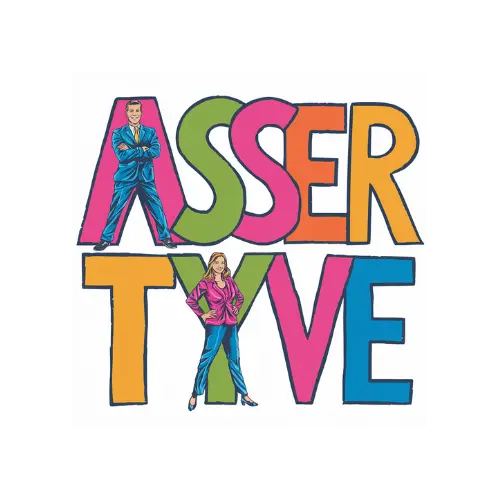The Importance of Understanding Others’ Perspectives
Understanding others’ perspectives is a fundamental aspect of effective communication. It involves stepping into someone else’s shoes and viewing the world through their eyes. By seeking to understand where others are coming from, we can build stronger connections, resolve conflicts more peacefully, and foster empathy in our interactions.
When we make an effort to understand different viewpoints, we demonstrate respect for others and their unique experiences. This not only enhances our relationships but also enriches our own perspective by exposing us to diverse ideas and beliefs. By actively listening and considering other perspectives, we can create a more inclusive and harmonious environment for communication to thrive.
Setting Boundaries in Communication
Setting boundaries in communication is essential for maintaining healthy relationships. By clearly defining what is acceptable and what is not, individuals can establish mutual respect and foster open dialogue. Setting boundaries helps to prevent misunderstandings, conflicts, and emotional turmoil that may arise from unmet expectations.
Communicating boundaries assertively and respectfully is key to ensuring they are understood and upheld. It is important to be firm yet considerate when expressing your needs and limitations. By setting clear boundaries, individuals can create a safe and comfortable space for honest interaction and establish a foundation of trust in their relationships.
Active Listening Techniques
Active listening is a crucial skill that involves fully concentrating on what the speaker is saying without interruptions or distractions. It goes beyond just hearing words; it also involves paying attention to the speaker’s tone, body language, and emotions to fully understand their perspective. By maintaining eye contact, nodding, and providing verbal affirmations, you can show the speaker that you are engaged and receptive to their message.
To demonstrate active listening effectively, paraphrase the speaker’s words to confirm your understanding and ask clarifying questions if necessary. Reflecting back key points shows that you are actively processing the information and that you value the speaker’s input. By staying present in the moment and genuinely listening to others, you can build stronger connections, improve communication, and foster mutual respect.
Expressing Needs and Desires Effectively
Understanding how to effectively express your needs and desires is a crucial skill in fostering healthy and harmonious relationships. When communicating your needs, it is important to be clear and direct, avoiding vague or ambiguous language that could lead to misunderstandings. Clearly articulating what you need helps others understand how they can support you and encourages open and honest dialogue.
It is also essential to communicate your desires in a respectful and considerate manner, taking into account the feelings and perspectives of others. By expressing your desires with empathy and understanding, you create a space for mutual respect and cooperation. Remember that effective communication is a two-way street, where both parties should feel heard and valued.
Recognizing Nonverbal Cues
Recognizing nonverbal cues is a crucial aspect of effective communication. Nonverbal communication includes gestures, facial expressions, body language, posture, and eye contact. By paying attention to these cues, you can gain a deeper understanding of the emotions and intentions behind the words someone is saying. For example, a person may say they are fine verbally but exhibit fidgeting or avoiding eye contact, indicating that they may actually be feeling uncomfortable or upset.
Moreover, nonverbal cues can also help you adjust your own communication style to better connect with others. Mirroring the body language and facial expressions of the person you are interacting with can create a sense of rapport and understanding. Additionally, being aware of your own nonverbal cues can help you convey sincerity and empathy in your communication, leading to more meaningful and authentic interactions.
• Nonverbal communication includes gestures, facial expressions, body language, posture, and eye contact.
• Paying attention to nonverbal cues can help understand emotions and intentions behind words.
• Mirroring the body language of others can create rapport and understanding.
• Being aware of your own nonverbal cues can convey sincerity and empathy in communication.
Handling Conflict Constructively
Conflicts are inevitable in any relationship, whether personal or professional. When disagreements arise, it’s crucial to approach them with a constructive mindset. Instead of getting caught up in negative emotions, strive to communicate openly and listen actively to the other person’s perspective. This can help both parties understand each other better and work towards finding a mutually beneficial solution.
During conflicts, it’s important to remain calm and avoid placing blame. Focus on discussing the issue at hand rather than bringing up past grievances. By staying present and addressing one issue at a time, you can prevent the conversation from escalating into a heated argument. Remember that conflict can be an opportunity for growth and understanding if handled effectively.
Building Trust and Rapport
Establishing trust and rapport in communication is essential for fostering positive relationships and meaningful connections. Trust is built upon honesty, integrity, and reliability, while rapport is developed through mutual understanding and respect. By consistently demonstrating sincerity and being attentive to others’ perspectives, trust can be established, leading to stronger connections and improved communication outcomes.
Building rapport involves creating a comfortable and open atmosphere where individuals feel heard and valued. This can be achieved through active listening, showing empathy, and engaging in genuine conversations. By taking the time to truly understand and connect with others on a personal level, trust can be built, paving the way for more effective communication and harmonious relationships.
Cultivating Emotional Intelligence
Emotional intelligence is a crucial skill that plays a significant role in our daily interactions. It involves the ability to recognize and manage our emotions while understanding and empathizing with the feelings of others. Cultivating emotional intelligence requires self-awareness, which involves being in tune with our own emotions and understanding how they impact our thoughts and actions.
Additionally, developing emotional intelligence involves self-regulation, which is the ability to control impulsive reactions and manage emotions in a healthy and constructive manner. This includes being able to adapt to changing situations without becoming overwhelmed by negative emotions. By honing these skills, individuals can navigate social interactions more effectively, build stronger relationships, and handle conflicts with greater empathy and understanding.
Respecting Differences in Communication Styles
Understanding that individuals have varying communication styles is crucial in fostering effective and harmonious interactions. People communicate in diverse ways based on their cultural background, upbringing, personality traits, and past experiences. By acknowledging and respecting these differences, misinterpretations and conflicts can be minimized, creating a more inclusive environment for communication to thrive.
When encountering individuals with different communication styles, it is essential to approach conversations with an open mind and a willingness to adapt. This may involve adjusting your tone, language, or nonverbal cues to better align with the preferences of the other person. By demonstrating flexibility and understanding, you can establish rapport and build stronger connections, ultimately enriching your communication experiences.
Practicing Empathy in Daily Interactions
Another key aspect of practicing empathy in daily interactions is the ability to truly listen to others without judgment or interruption. This involves giving the other person your full attention, maintaining eye contact, and acknowledging their feelings and perspectives. By demonstrating genuine interest and validation, you can create a safe space for open and honest communication to flourish.
Furthermore, empathy in daily interactions involves putting yourself in the other person’s shoes and trying to see things from their point of view. This requires a willingness to step outside of your own preconceived notions and biases in order to understand the emotions and experiences of others. By showing empathy, you not only foster deeper connections with those around you but also promote a culture of mutual respect and understanding in your relationships.
Why is understanding others’ perspectives important in daily interactions?
Understanding others’ perspectives helps to build empathy, strengthen relationships, and improve communication.
How can setting boundaries in communication improve empathy?
Setting boundaries in communication helps to create a safe space for open and honest dialogue, fostering a deeper understanding of each other’s needs and feelings.
What are some active listening techniques that can enhance empathy?
Active listening techniques include paraphrasing, summarizing, asking clarifying questions, and maintaining eye contact to show genuine interest in the other person’s perspective.
How can one express their needs and desires effectively while practicing empathy?
Expressing needs and desires effectively involves using “I” statements, being specific about what you need, and actively listening to the other person’s response.
Why is it important to recognize nonverbal cues in daily interactions?
Nonverbal cues, such as body language and facial expressions, can provide valuable insights into a person’s emotions and feelings, helping to enhance empathy and understanding.
How can one handle conflict constructively while practicing empathy?
Handling conflict constructively involves active listening, expressing empathy, and seeking mutual understanding to find a resolution that respects everyone’s needs and feelings.
What are some ways to build trust and rapport in daily interactions?
Building trust and rapport involves being genuine, showing empathy, being reliable, and respecting boundaries to create a strong foundation for healthy relationships.
How can one cultivate emotional intelligence to enhance empathy?
Cultivating emotional intelligence involves self-awareness, self-regulation, empathy, social skills, and motivation, which can help improve understanding and connection with others.
Why is it important to respect differences in communication styles while practicing empathy?
Respecting differences in communication styles helps to acknowledge and validate each person’s unique way of expressing themselves, fostering empathy and mutual understanding.
How can one practice empathy in their daily interactions?
To practice empathy in daily interactions, one can actively listen, show understanding and compassion, validate others’ feelings, and strive to see things from their perspective.







Leave a Reply